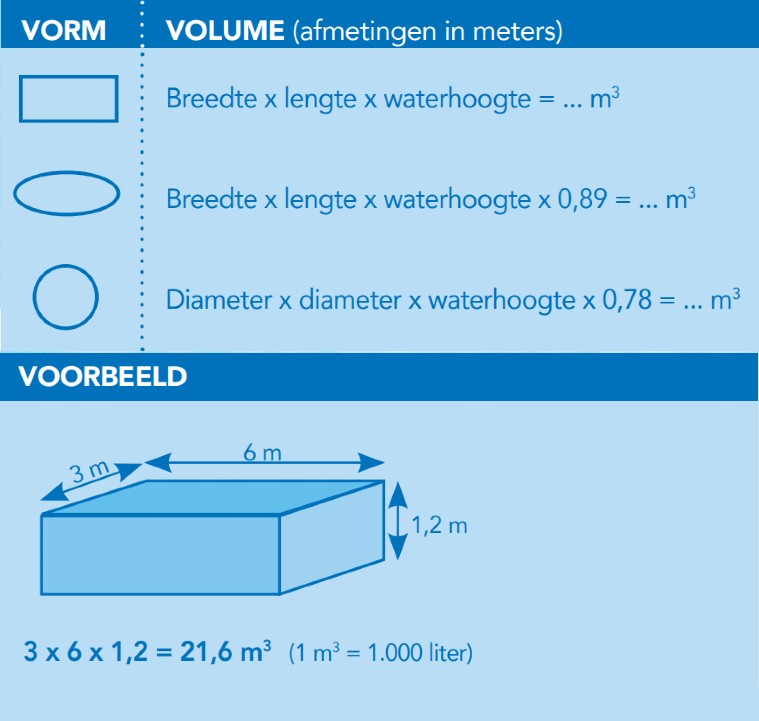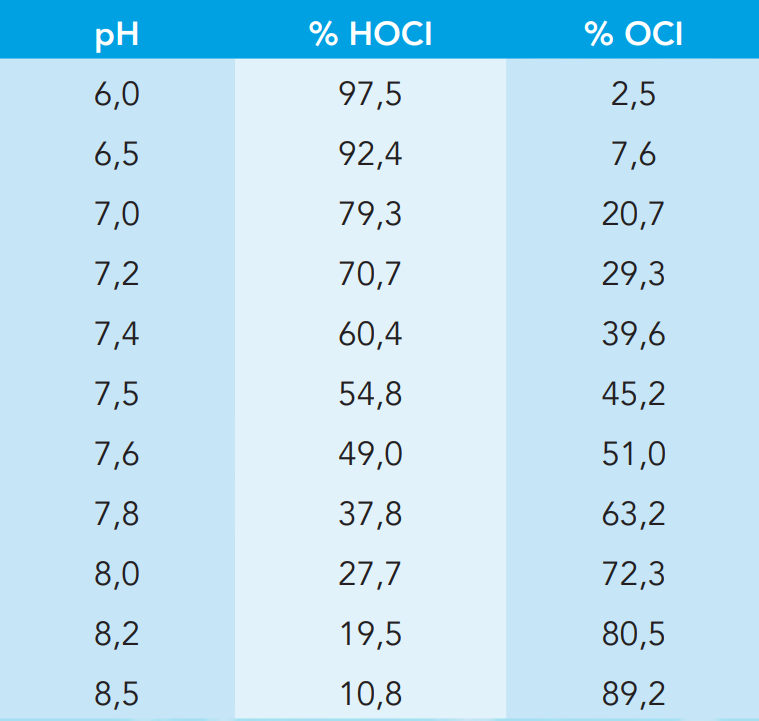In the case of a pH level above 7.6, we recommend lowering the pH level first.
Recommendation: pH: 6.8. At this pH level, only a shock treatment will have an effect. To clarify:
Chlorine has two components: HOCl and OCl-. Of these two, HOCl is the active component, while OCl- has no effect. You may forget this information, but knowing it now should help you to better understand the pH table:
As an example, the table clearly shows that chlorine is only around 11% effective at a pH level of 8.5. At a pH level of 6.0, however, the effectiveness is 97.5%
The how and why is not particularly relevant – it’s important, however, to understand that it is a given fact that a shock will not be quite so effective if the pH level of the water is (far) too high.
In that case, why is it always said that the pH level should be kept at between 7.2 and 7.6?
If the water is of good quality, it is advisable to keep the pH level at around 7.2 as then, as the table
shows, the chlorine is still around 70% effective. That is usually sufficient for proper disinfection.
Here though, we’re talking about water that is NOT of good quality. In that case, to achieve favourable results quickly, we recommend lowering the pH level to 6.8.




